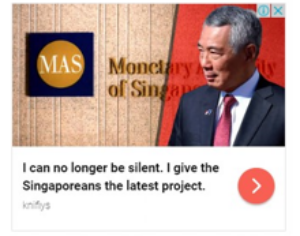Over the last few years fraudulent advertisements on social media and open exchange programmatic platforms have become increasingly common. Here are some tips on what to do, what not to do and what to look for.
10 ways to avoid being scammed
A bank will not ask for funds to be urgently transferred, so always ignore these requests.
Ignore SMS messages from a bank with a telephone number. Call the bank directly on an independently sourced number.
Ignore requests from someone claiming to be from your bank asking you to transfer money to “keep it safe”. Scam experts warn that fraudsters are using smoothing computer-generated voices to lull victims.
Ask anyone claiming to be a bank representative for a reference number and call the bank on an independently sourced number. For example, for credit cards do not call the number in any emails, call the number on the back of the card.
Never provide online banking passwords, one-time security codes, pins or tokens to anyone over the phone.
Contact your bank or financial institution if you think you are a scam target.
Threats in a message, such as “your bank account has been locked” or “a payment has been made from your account” are signs of a bank impersonation scam.
Never click on suspicious links. They could trick you into divulging personal information or be a way to download viruses, malware or spyware on to devices.
Scammers can make invoices appear legitimate by copying logos and ABNs. Or they can send emails that appear to be from the business you are dealing with, but with changed banking details.
Be wary of offers that appear too good to be true. Call an organisation on a trusted number to confirm if an offer or payment details are legitimate before transferring any money.
(This top 10 comes from our friends at The Australian Financial Review)
Silence Unknown Callers – if you have an iPhone you could consider switching on “Silence Unknown Callers” (instructions from Apple) which sends any callers who are not in your Contacts straight to voicemail.
What do fraudulent investment advertisements look like?
Authority figures: fraud investment advertisements often use well known or authority figures to persuade you to click.
Here is a deep fake video pretending to be the former CEO of the Australian Stock Exchange (ASX). The CEO of a stock exchange is unlikely to step down to start a WhatsApp group. The Australian details how this advertisement was reported but continued to be shown.

Authority figure and fake endorsement: The Prime Minister of Singapore and the Singapore financial regulator MAS would never run advertisements to advertise crypto currency. Financial regulators in any jurisdiction will never recommend a product – use of their logos should be viewed with caution.

Shocking news: many fraud ads feature a fake photos of a well known celebrity being arrested or getting into trouble, sometimes apparently for sharing a “secret” about making money. TV presenter David Koch had many fake images used in Facebook ads – Inside the world of fake ad scams stealing the identities of Kochie and celebrities like him around the world.

Fake news sites and authority figures: fraud advertisements often link to fake versions of well known sites. Here is a fake version of The Mirror (notice the incorrect URL) featuring a doctored photo of David Koch:

Australia’s financial regulator, ASIC, has warned consumers about “Social media click bait” and “dodgy cold calling operators and online baiting tactics” – May 2024
“ASIC is warning consumers to be wary after an ASIC review identified some cold calling operators using high-pressure sales tactics and online click-bait advertisements to lure consumers into receiving inappropriate superannuation switching advice.”
“Social media click bait – how it works If you’ve seen posts on your social media feed questioning whether your super is performing or encouraging you to compare your super fund, be careful. Similar to how cold callers use pushy sales tactics over the phone, there are some businesses that try to grab your attention on social media before they try to sell you their services. To avoid getting hooked, just scroll past them. Or to get them off your feed, opt to ‘see less’ of these posts or block them using the settings within your social media apps.”
ASIC press release and warning to consumers.
Relevant articles
Facebook can go on abetting the scammers
Andrew Forrest accuses Facebook of ‘blatantly refusing’ to take action against scam ads
Scam ads rampant on popular social platforms
Victims speak out over ‘tsunami’ of fraud on Instagram, Facebook and WhatsApp
It’s time social media platforms unfriended fraudsters
More
Approval of all campaigns and types of ads that Dianomi will not approve
Made For Advertising websites (MFAs) – what are they?
Financial services marketing & advertising – everything you need to know
Should you pause your financial services advertising over Christmas and the New Year holidays?
Financial Services Marketing Sydney – June 2025
Financial Services Marketing Singapore – September 2025